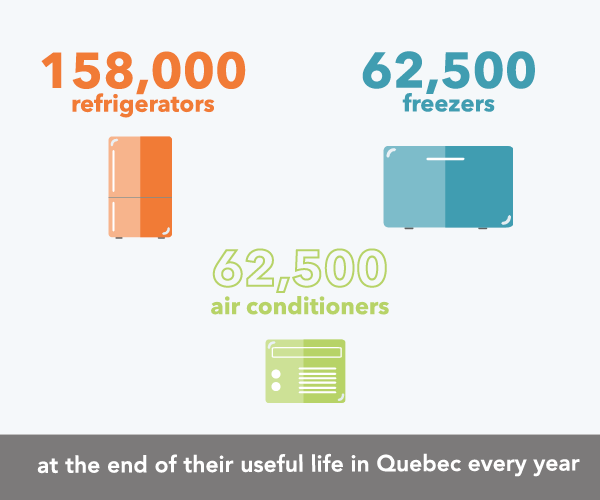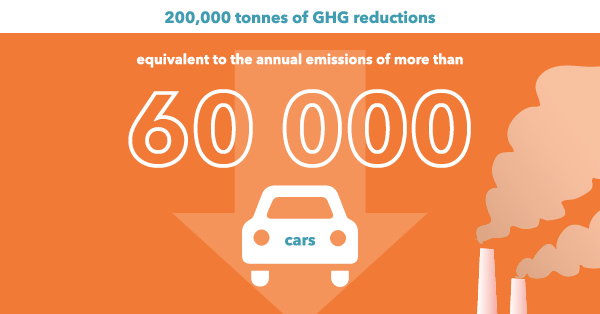Published on
Did you know that if it’s not well disposed of at the end of its life, a refrigerator can generate as much CO2 emissions as a car that travels approximately 17,000 kilometres, the annual average for Quebec drivers?
Refrigerant gases: significant greenhouse gas emissions
The refrigerant gases found inside our appliances - fridges, freezers, air conditioners - which include halocarbons and hydrochlorofluorocarbons, are powerful greenhouse gases (GHGs). They have a global warming potential ranging from 1,400 to 10,900 times higher than that of CO2. When not properly removed from refrigerators, freezers and air conditioners at the end of their useful life, these GHGs escape into the atmosphere and contribute to the climate crisis.
In Quebec, we have the technology in place to capture and destroy the gases contained in appliances, including their insulating foam. However, prior to last week's announcement, the recovery of large appliances that have reached the end of their useful life by retailers was not a regulatory requirement.
Extension of Extended Producer Responsibility
On November 4, the government of Quebec amended the Regulation respecting the recovery and reclamation of products by enterprises to make producers of large household appliances subject to the principle of Extended Producer Responsibility (EPR). The regulation will require retailers of major household appliances to recover the products they sell at the end of their useful lives and treat the halocarbons contained in them in an environmentally responsible manner.
In numbers
- Every year, there are an estimated 158,000 refrigerators, 62,500 freezers and 62,500 air conditioners at the end of their useful life in Quebec.

- The new measure is expected to eventually reduce GHG emissions by more than 200,000 tonnes per year (equivalent to the annual emissions of more than 60,000 cars).

This new regulation responds to a request that Équiterre made to the provincial government as an important measure in response to the climate crisis.




